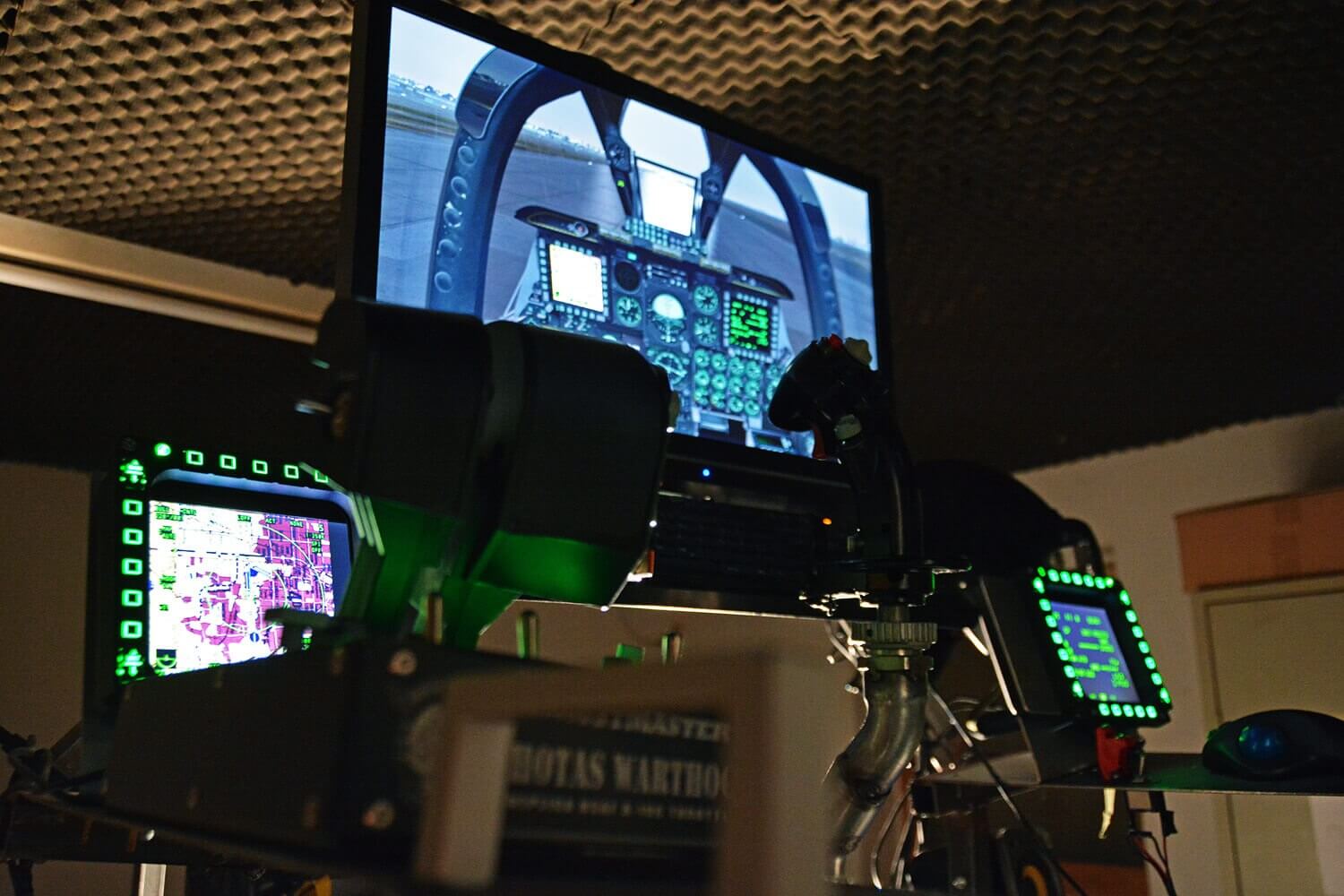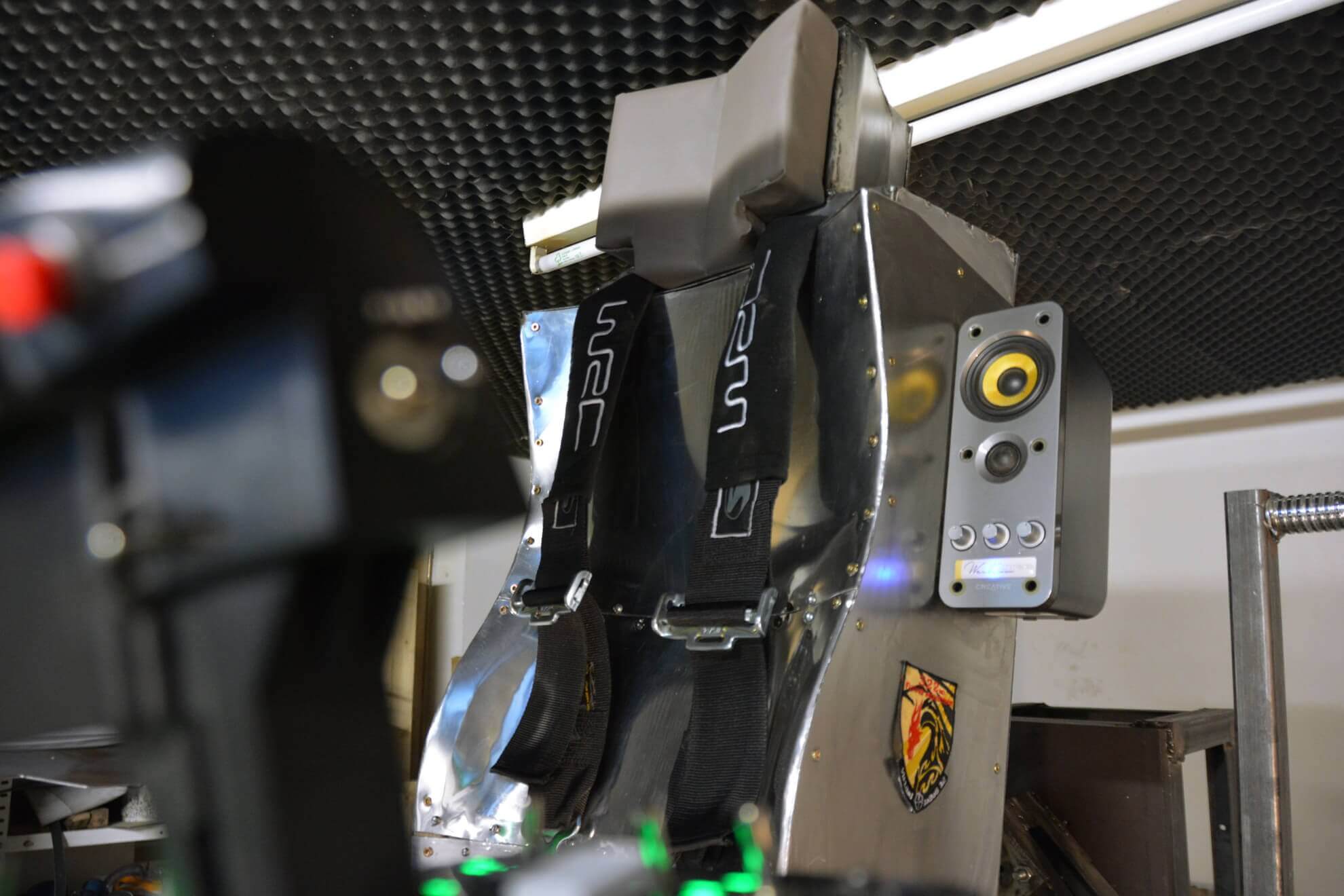In context: Military fighter pilots spend a lot of time training in flight simulators. These are much more elaborate than simply sitting behind a desk running an advanced software sim. Instead, they use cockpit mockups capable of rotating to simulate both the controls and the G-forces of the aircraft.
Military flight simulators cost millions of dollars to build, but one ambitious engineer named André Pointner has built one on a shoestring budget (comparatively). The three-axis device can rotate the pilot 360 degrees to simulate barrel rolls and other maneuvers (video below). The rotations also help simulate the forces experienced in flight.
Since G-forces are a function of gravity, the max a user can feel without moving is one gravitational unit (1g). By comparison, fighter jets can pull up to 9g vertically. To intensify these effects, Pointner created a five-point harness that tightens intelligently. Depending on the conditions, the system increases the pull to make it feel like up to 3g of force.
While the DIY cockpit does have a small monitor, Pointner does not use it when running a simulation. Instead, he has a helmet with an HTC Vive fastened to it. Not only does this allow the sim to be more immersive, but it also conserves space and money when compared to trying to build a 360-degree dome with projection screens.
Pointner did not share how much the cockpit cost him to construct, but he did share some details on the X-Sim forums. A partial "shopping list" includes:
- Two Elegoo Uno R3 (he says avoid using Arduino since its VDC is less accurate)
- Two Hallsensor (Pot 360-degree endless)
- Two Sabertooth dual 60A motors
- One Sabertooth dual 15A motor
- One Kangaroo motion controller
- One Quadro Encoder 5V
- Four 12V / 35Ah batteries (for the cockpit)
- Two 12V / 7Ah batteries (for the belt system)

While cheap by military standards, this project can be prohibitively expensive if you are starting from scratch.
It can also be a bit dangerous, so caution is heavily advised before building one of your own. Not only are there moving parts to contend with, but Pointner also warns that using the wrong motors for the harness tensioners could result in severe injury or death.
"With 360°, 200kg Basket and 230V AC even small mistakes can end deadly," he says. "Don't use more then max. 3kW actuator. Or at least make very sure that the motor don't get more power then 3000W peak. Why? 2000W brake your bones, but you will survive likely. But at 5000W everthing is just ripped apart instantly [sic]."
If you plan to build something like this, proceed at your own risk. A more complete list of required parts and some of the problems he faced can be found in his forum posts.
